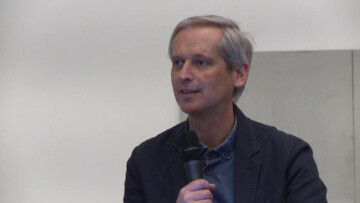For the last 175 years the exhibition has been the principal delivery vehicle for art, or at least our current understanding of what art is. For the other 40.000 years or so of human history, art has been manifested through other social forms, networks and frameworks. The advent of the exhibitionary era was marked by the Great Exhibitions of the 19th Century, complicit with imperial power, industrial scale economies, mercantile capitalism, markets and the spectator economy. The concept of the Constituent Museum arises at the tail end of this era of modernity, when we question the rationale of the operating system we have inherited, as we watch it creak and crumble. Are museums and galleries just for show? Do they only work in the regime of representation, of what has just passed? Or do they have an emerging role in the realm of operation, driving social change, making a new culture for the wider range of people that constitute our society? If the latter is the case, then the temporary exhibition can surely no longer hold sway. Its manners and associated behaviours work for far too may now, the grand narrative replaced by a fragmented world of parallel micro-narratives, the international replaced with the interlocal. If exhibitions are founded on autonomy, what new platforms for art could we imagine that are founded on ecology?


